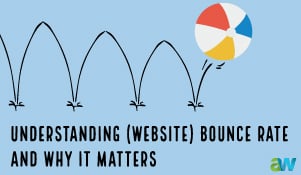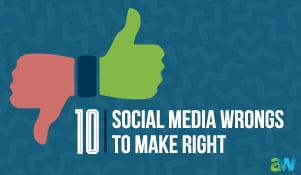Business websites are designed, launched, and refined with one purpose in mind: generating conversions. But a lot of marketers never really stop to consider whether they are looking for the right conversions or not. Or more to the point, they assume that a conversion equates to a sale, which can be problematic.
That might seem like a silly concern. After all, aren’t we all looking for more sales? Probably, but that’s not always realistic for a first-time visitor to your website. The bigger a decision is (in your buyer’s mind), the more research they are going to undertake… and the more numerous the opportunities you have for smaller conversions that bring them closer to doing business with you and becoming a lifelong customer.
In other words, the goal of every interaction doesn’t have to be an exchange of currency. You can set other, smaller targets that help you build relationships with buyers, and then focus on those. If you can achieve enough micro conversions, the bigger macro conversions (e.g., sales) will take care of themselves.
Examining Micro-Conversion Goals
When you follow this mindset, the rules of the game change significantly. Your campaigns and landing pages take on a different focus. Instead of taking an “all or nothing” approach, you might ask visitors to take a series of smaller steps. Some examples might include these:
- Following you on a social profile
- Signing up for your email newsletter
- Downloading an industry report or white paper
- Creating a profile on your website
- Leaving a comment on your blog or page
None of these is as substantial as a finished sale would be, but they are much easier steps to get a prospect to take. Most of us understand intuitively that we have a much higher chance of converting a web visitor into a subscriber than we do an actual buyer—at least during our first few interactions with them. Then, the question becomes: how do we keep them moving along towards our macro conversions?
Making the Most of Micro-Conversion Steps
There is a process we can follow to turn micro conversions into bigger sales opportunities. The first step is choosing the right micro goals to begin with. Even though we aren’t looking for actual transactions, we do want to lead buyers in the right direction. So, that means focusing on something that’s measurable (so we can see whether our campaigns are progressing or not), and that would ideally give us a chance to interact with them again.
That opportunity for follow-up is important, because after a successful micro conversion, you want to give prospects a next step that brings them closer to actually buying. This could be another micro conversion. For example, someone who signs up for your email newsletter might be given the opportunity to download a report or join a webinar later.
By putting progressive steps in place, you take what would have been a more challenging task—selling your products or services to someone who is learning about your company for the first time—and break it into a set of small, easily-achievable objectives.
New sales are almost always going to be the ultimate conversion goal for most businesses, but putting smaller targets in place can help you dramatically improve bottom-line figures over time. So, are you focusing on the right conversion goals for your business?








Leave a comment